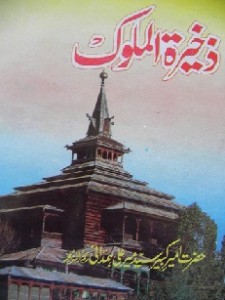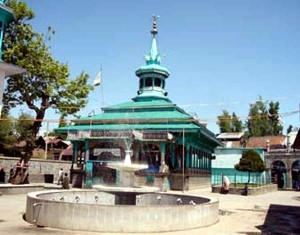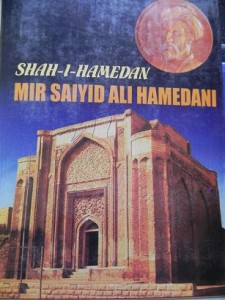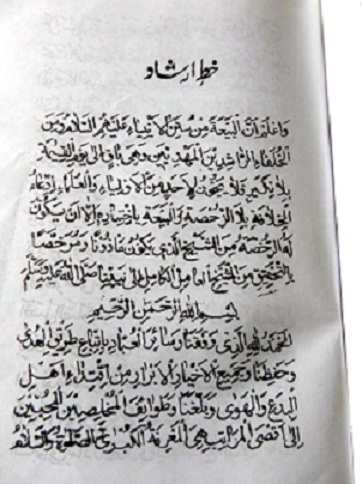Peace Watch » Editor's Take, Featured » Kashmir Muslim Society New Challanges
Kashmir Muslim Society New Challanges
I want to have a frank talk with ‘the pulpit’. My belief is that I will not be committing any blasphemy in stating my mind to the preachers and sermonizers in my part of the world. Like overwhelming majority, I am born, and brought up in a Muslim family and have not received any formal education in Deen. I have not been a student of any seminary or theological school. Conscious of my limitations and lack of religious scholarship in articulating my concerns I will avoid taking recourse to any dogmatic school of thought but will strive to put my point of view before the sermonizers and preachers not as polemist but as a humble student of Kashmir history
. Having understood the essence of the verse 103 of Aal-Imran, “Hold on firmly to the rope of Allah and do not allow differences to occur among yourself”, I will try to draw strength for my argument not from the history of any other nation but from our own land that has witnessed unparalleled peaceful transition to Islam. And relate it to the contemporary worrisome situation of schisms that have been surreptitiously seeping into our society and have created a threatening situation.
However, skeptical one may be, historically now for about eight decades Kashmir has been a battleground of ideologies. Whether to its liking or disliking, the ideological battles that swept over the British India not only affected but also ensnared its indigenous movement against the scrapping of the “sale deed” under which British had sold the land and people as cheapest merchandise. This movement starting with the drafting and presentation of seventeen-point memorandum to Lording Reading in October 1924 four months after the revolt by the Silk Factory workers in 1931 turned into a tidal wave that shook the roots of the feudal autocracy and caused the birth of the first major political organization the Jammu and Kashmir Muslim Conference. Immediately after its birth, the narrative of this organization suffered the machinations from the feudal ruler. History bears testimony that the war of political ideologies during thirties in all its manifestation sucked into it the then top religious leadership including top preachers causing sectarian divide within the Muslim community. And accentuation of the political divide sharpened the sectarian divide adding some ugliest pages of community squabbles and hatred to our history. This divide, I see as one of the major contributory factor to what British historian Alastair Lamb calls as birth of a tragedy. In fact, this schism has been largely cause for perpetuation of our agonies.
 True, schism within the political movement in the state has a history but fact remains that in the post fifties scenario the pulpit has not been part of the political divide but with ostensible growing tug of war between the ‘dominant narrative’ and the ‘peoples narrative’ Kashmir society seems apprehensive about the pulpit getting sucked into it once again. There has been an unprecedented multiplication of religious organization in the state, professing belief in one or the other sect; some of these sects have been hitherto unknown in the state. Some of them are “well-to-do”. There are wide spread speculations about the cause behind the multiplications of the religious organization. The multiplication of religious organization is seen in sync with the thinking of some “peace activists” working on conflict resolution’, Yogender Sikand’s, Religion, Inter-communal relations and Kashmir Conflict does provide some insight into this phenomenon but there is need for an in-depth study for understanding the dynamics of this growing in sectarian noise.
True, schism within the political movement in the state has a history but fact remains that in the post fifties scenario the pulpit has not been part of the political divide but with ostensible growing tug of war between the ‘dominant narrative’ and the ‘peoples narrative’ Kashmir society seems apprehensive about the pulpit getting sucked into it once again. There has been an unprecedented multiplication of religious organization in the state, professing belief in one or the other sect; some of these sects have been hitherto unknown in the state. Some of them are “well-to-do”. There are wide spread speculations about the cause behind the multiplications of the religious organization. The multiplication of religious organization is seen in sync with the thinking of some “peace activists” working on conflict resolution’, Yogender Sikand’s, Religion, Inter-communal relations and Kashmir Conflict does provide some insight into this phenomenon but there is need for an in-depth study for understanding the dynamics of this growing in sectarian noise.
I am not here to pass judgment on any sectarian or religious organizations or sermonizer or to comment over diatribe of one sectarian organization against another but any ordinary student of Kashmir history can predict that this trend can prove catastrophic for the Muslim community of the state. Having suffered immensely the society cannot afford the repeating the feuds within society based on allegiance to sectarian or other organization. To steer out of any such situation Kashmir history offers many lessons in the spirit and style of great missionary Mir Syed Ali Hamadani and Alamdar-e-Kashmir Sheikh Noor-u-Din. 
Chroniclers have very candidly recorded the arrival and spread of Islam in Kashmir. History of Islam in ‘Kashmir does not originate with establishment of the Muslim Sultanate in fourteenth century’ quoting Kalhana and other sources this has been restated by many historiographers including G.M.D. Sufi and Prof. M.A. Wani.
It was the character commitment and moral strength of the missionaries that brought what many term as silent revolution in Kashmir. Prof Ashraf citing from Moti Chandra’s ‘the Courtesans of Kashmir’ narrates the incident of a courtesan refusing to take her fee in presence of a “mleecha gayanah’ Muslim Manqabibkhan. He writes, “These mleecha singers of Sanskrit scholar had gained so much prestige and influence because for their piety that the courtesans (who otherwise freely indulged in prostitution under the very nose of local religious gurus and state authorities) refused to entertain clients at their sight.”
How Mir Syed Ali Hamadani carried forward the mission of spreading word of Allah initiated in big way Sayyid Sharaf al Din, Sayyid Hussain Samnani, Sayyid Taj-u-Din and couple of others without allowing the complexities of sects to come in the way of smooth transition of the society to Islam has lessons for contemporary religious preachers. And for his achievements every historian including Sir Walter Lawrence say it was Shah Hamadan who practically established Islam in the valley. The mission of Sheikh Noor-u-Din Wali should serve as a lodestar for religious leaders. He was no ascetic but a missionary with a revolutionary zeal.
In the words Yoginder Skind, “Nuruddin ‘s championing of the cause of the poor and his bitter critique of the ‘worldly’ Muslim ‘ulama (‘ulama-e-su), Hindu priests and the political elites, won him the wrath of the establishment.”In contemporary context there is need to understand significance of the meeting between Mir Muhammad Hamadani and Alamadar and (khat-e-irshad). This I believe was for serving greater cause. Not only these great missionaries but even sermonizers and preachers have left great lessons for the posterity. G.T. Vigne in his book Travel in Kashmir…is all praise for Sudu Bayu, the founder of Mirwaiz clan. At 110, he talked of ending of Sikh Rule as Vigne says, “Hoped to see the day when Kashmir would be in the possession of my countrymen”. He spurned the offers of money and estate by Sikh Governor and even declined to meet him.
These are the traditions that our sermonizers need to emulate…
Filed under: Editor's Take, Featured · Tags: Mir Syed Ali Hamadani, Nund Reshi, Sheikh Noor-u-Din, Z. G. muhammad, Zahid










Well said Ajaz sahib.
The beauty of these great people you have mentioned was that they learned deen for the sake of Allaah and practiced what they preached.
Nowadays preachers learn the deen to defeat other preachers in debates and eloquence and do not practice what they preach. How do we expect to see unity when we are working for division?
you are right Ajaz Sahab they were righteous in true sense